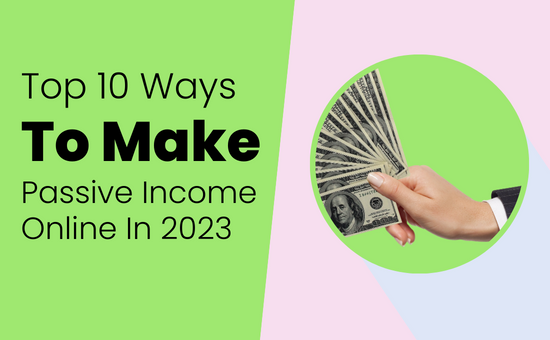What is Affiliate Marketing? A Comprehensive Guide for Beginners
Affiliate marketing is one of my favorite passive ideas that I use to make a decent income online while working from home.
If you’re curious about how affiliate marketing works and want to get started, you’re in the right place!
In this detailed blog post, I’ll walk you through what affiliate marketing is, how it works, and the steps you can take to earn commissions just like I do. Let’s dive in!
What You Will Learn:
- What affiliate marketing is and its benefits
- How to choose a niche
- Tools and resources to invest in
- Strategies for promoting affiliate products
- Tips for generating consistent income
What is Affiliate Marketing and How It Works

Below I will be sharing a lot useful information about affiliate marketing as passive income business model. I will be covering things like what it is, how it works and most importantly how you can get started with passive income idea.
Let’s dive in…
1. Understanding Affiliate Marketing
You may have read the term affiliate marketing many times and still not have a clear idea of what it is and how it works.
That’s why, I will start with giving you an overview of what this business model is and how it works.
Definition of Affiliate Marketing
In simpler words, it’s a way of promoting someone else’s product, course or service and earning money for each successful sale.
In my case, I promote KDP tools and courses and earn affiliate commission whenever I generate a sale. Sounds interesting, right? Let me break it down for you.
How Does It Work?
In a nutshell, affiliate marketing is about connecting buyers with sellers. Here’s how it works:
- Find a Product or Service: You start by choosing a product or service that aligns with your niche. I recommend you to select something you genuinely believe in because it gives you the confidence and authenticity needed to create content about it.
- Join the Affiliate Program: Once you’ve picked a product you believe in, you’ll sign up for its affiliate program. This often involves filling out a simple application. Most companies provide you with a unique affiliate link to track your referrals.
- Promote the Product: Now comes the fun part! You can share your affiliate link through blog posts, social media, or YouTube videos. The key is to provide valuable content that helps your audience understand why they should check out the product.
- Earn Commissions: When someone clicks on your link and makes a purchase, you earn a commission. It’s that simple!
Why Choose Affiliate Marketing?
Affiliate marketing is not just about making money; it’s about sharing products that can genuinely help others. Here are a few reasons why I love it:
- Low Entry Barrier: You don’t need to create your own products or deal with inventory. This means less stress and more time to focus on creating great content.
- Flexibility: You can work from anywhere and set your own hours. Whether you want to work part-time or dive in full-time, the choice is yours.
- Passive Income Potential: Once you set up your affiliate links and promote them, you can earn money even while you sleep! This is a game-changer for anyone looking to boost their income.
Understanding affiliate marketing is the first step toward making it work for you. It’s not just about selling—it’s about connecting with your audience and providing them with solutions they need.
In my next section, I’ll share how to pick a niche that resonates with you and lays the groundwork for your affiliate success!
2. Choosing the Right Niche
Choosing the right niche is like laying the foundation for your house – it’s absolutely essential for long-term success in affiliate marketing!
When I first started, I quickly realized that picking a niche I was passionate about not only kept me motivated but also made my content more authentic and engaging.
Let’s dig into why this step is so important and how you can go about finding your perfect niche.
Importance of Selecting a Niche
Your niche is your specialty – it’s what sets you apart from the competition. By focusing on a specific area, you can become an authority in that field, which helps build trust with your audience.
When people see you as an expert, they’re more likely to click on your affiliate links and make a purchase.
On top of that, a well-defined niche allows you to create targeted content that resonates with a specific audience, leading to better engagement and conversion rates.
Tips for Identifying a Profitable Niche
1. Follow Your Passion: Start with what you love! If you’re excited about a topic and do it yourself, your experience will shine through in your content. This passion makes it easier to produce high-quality content consistently.
2. Research Market Demand: Use tools like Google Trends, keyword research tools, or even social media to gauge interest in your potential niche. Look for keywords with a decent search volume but lower competition to find opportunities.
3. Analyze the Competition: Check out existing affiliates in your potential niche. Are they thriving? Look for gaps in their offerings where you can provide unique value.
4. Consider Profitability: Ensure that there are affiliate programs available that offer good commission rates. Look for products that have a reputation for selling well and that you can genuinely endorse.
Examples of Successful Affiliate Niches:
Health and Wellness: From supplements to fitness equipment, this niche is always in demand and offers numerous affiliate opportunities.
Personal Finance: With the growing interest in financial literacy, promoting tools for budgeting, investing, and saving can be lucrative.
Self-Publishing and Writing: As someone who’s been in this niche, I can tell you there’s a wealth of products to promote, from writing courses to publishing software.
Travel: Affiliate marketing in travel can include anything from hotel bookings to travel gear—perfect for those with a passion for adventure!
By choosing the right niche, you set the stage for your affiliate marketing journey. It’s all about finding that sweet spot where your interests align with market demand.
In the next section, we’ll explore some useful tools that allow you maximize your affiliate earnings!
3. Investing in the Right Tools and Resources
Investing in the right tools and resources is like equipping yourself with a well-stocked toolbox before starting a home improvement project.
You wouldn’t try to build a deck with just a hammer, right? In the world of affiliate marketing, having the right tools can make all the difference in your success. Let’s break down what you need to thrive in this space!
Essential Tools for Affiliate Marketers:
Tracking Software: Understanding your performance is key. Tools like ClickMeter or Bitly help you track clicks and conversions, allowing you to see which of your promotional efforts are paying off. This data helps you refine your strategy for better results!
Email Marketing Tools: Building an email list is crucial. Platforms like Systeme.io or ConvertKit allow you to nurture relationships with your audience, share valuable content, and promote your affiliate products directly to their inboxes.
Content Creation Tools: Whether it’s for writing blog posts or designing eye-catching graphics, tools like Canva and Grammarly can help you create professional-looking content that grabs attention.
Recommended Resources for Beginners:
Online Courses: If you’re new to affiliate marketing, consider investing in a course. Platforms like Udemy or Skillshare offer affordable options that cover the basics and advanced strategies alike.
Books and Ebooks: There are countless books on affiliate marketing. You an also checkout my eBook, The Affiliate Income Playbook, which shares my step-by-step process!
Podcasts and YouTube Channels: Sometimes, you just want to listen or watch instead of reading. Look for podcasts or YouTube channels that focus on affiliate marketing strategies. They often share real-life experiences and tips that can save you time.
Importance of Reinvesting in Your Affiliate Business:
As you start seeing some success, it’s tempting to cash out and celebrate. However, reinvesting in your business is crucial for scaling up. Whether it’s purchasing more advanced tools, running paid ads to reach a larger audience, or enrolling in more specialized courses, reinvesting will help you grow.
Remember, the more you invest in your knowledge and resources, the more you can maximize your affiliate income!
By equipping yourself with the right tools and resources, you’re setting a strong foundation for your affiliate marketing journey.
Up next, we’ll explore how to promote your chosen products effectively and generate consistent sales!
4. Creating Valuable Content to Promote Products
Creating valuable content is the core of any successful affiliate marketing strategy. Why? Because content is how you connect with your audience, offer real value, and naturally introduce the products you’re promoting.
It’s not about “selling” – it’s about educating, sharing, and helping your readers with solutions they’re genuinely interested in. Let’s dive into some powerful ways to create content that builds trust and drives sales.
Types of Content That Drive Affiliate Sales
Blog Posts: Blogging is one of the most effective ways to share in-depth product reviews, tutorials, and guides.
If you have a website or a Medium page, consider writing posts that educate your audience on a specific topic related to your niche. A well-written blog post can rank on Google, bringing in traffic (and potential commissions) month after month.
Youtube Videos: If you’re comfortable on camera, video content is gold! Platforms like YouTube are perfect for tutorials, unboxings, and walkthroughs of the products you’re recommending. People love to see products in action, so show them how you use the tools yourself, adding that personal touch.
Social Media Posts: Social media platforms like Instagram, Facebook, and Pinterest allow you to reach a broad audience quickly. Short, engaging posts or reels can spark interest, while longer posts or live sessions can dive into more detailed product insights. Mix it up to keep your followers interested!
Strategies for Adding Value to Your Audience
Educate First, Sell Second:
The best affiliate marketers know that helping comes before selling. Focus on educating your audience by sharing tips, best practices, and personal experiences. For instance, if you’re promoting a productivity tool, consider writing a post or making a video about “5 Tips to Boost Productivity” and subtly introduce the tool as part of your solution.
Share Personal Experiences:
Nothing beats authenticity. Share how you’ve used the product, what you love about it, and how it’s improved your own workflow. Audiences connect with real stories, so don’t be afraid to let your personality shine through.
Provide Comparisons and Alternatives:
People love choices! If you’re promoting a product, try including alternatives in a “Product A vs. Product B” comparison. This approach builds trust because it shows that you’re objective and focused on providing real value, not just pushing a sale.
How to Effectively Incorporate Affiliate Links in Your Content
Use Natural, Contextual Links
Try to include your affiliate links naturally within the flow of your content. Avoid sounding too “salesy.”
For example, if you’re writing a blog post, link to the product name when it first appears, or add a subtle “Check out [Product] here” at the end of your description.
Add a Clear Call to Action (CTA):
While you don’t want to overdo it, a strong call to action can guide your audience. Something as simple as “If you want to give [Product] a try, here’s a link to check it out!” is a friendly nudge for interested readers.
Use Disclosure Statements:
Transparency is key. Clearly disclose that your links are affiliate links, showing your audience that you’re honest about your recommendations. Trust me, people appreciate honesty!
Creating valuable content isn’t just about adding affiliate links; it’s about establishing yourself as a trusted source.
When you genuinely help your audience solve their problems, your recommendations become powerful because they’re backed by credibility.
Next up, we’ll discuss strategies for amplifying this content to maximize your affiliate earnings!
5. Building an Audience and Driving Traffic
If you’re looking to succeed in affiliate marketing, building an audience and driving consistent traffic to your content is crucial.
With a growing audience, you have more potential readers, viewers, and buyers engaging with your affiliate offers, which means a better chance of earning commissions. Here’s how to start building that audience and keep the traffic flowing.
Techniques for Attracting and Growing Your Audience:
Provide Consistent Value:
People return to creators who consistently provide valuable content. Whether it’s on a blog, YouTube channel, or social media platform, make sure your audience knows you’re a trusted source for helpful insights and advice.
Engage and Build Relationships:
Building a community isn’t just about pushing out content—it’s about engaging with people. Reply to comments, answer questions, and ask your followers for their thoughts. Engagement builds trust, which is the foundation for successful affiliate marketing.
Offer Free Resources or Guides:
One of the best ways to attract new followers is by offering something valuable for free. This could be an eBook, checklist, or template. Not only does this showcase your expertise, but it also builds goodwill, encouraging people to follow your recommendations.
SEO Tips to Increase Organic Traffic:
Focus on Keyword Research:
Start by identifying relevant keywords in your niche that people are searching for. Tools like Google Keyword Planner or Ubersuggest can help you find popular search terms. Include these keywords naturally within your content, titles, and descriptions to increase your chances of ranking in search engines.
Optimize On-Page SEO Elements:
When creating blog posts or website content, make sure to use your target keyword in strategic places like the title, headers, and meta description. Adding internal links and using optimized images with alt text can also boost your on-page SEO.
Build High-Quality Backlinks:
Backlinks, or links from other reputable sites to yours, signal to search engines that your content is valuable. Reach out to other creators in your niche, contribute guest posts, or collaborate on content to increase your backlink profile and improve your organic search visibility.
Using Social Media to Promote Affiliate Offers:
Choose the Right Platform:
Each social media platform attracts a different audience, so pick the ones that align best with your niche. For instance, Pinterest is great for visual content and tutorials, while Twitter works well for bite-sized tips and links.
Create Engaging, Shareable Content:
Social media is a powerful tool for reaching a larger audience, but it requires engaging content. Visual posts, reels, or short videos showcasing your affiliate products in action tend to get more engagement and shares. Think about what grabs your attention and try to create that for your audience.
Leverage Social Proof and Testimonials:
If you have success stories or testimonials from others who’ve used the products you’re promoting, share them! Social proof can go a long way in convincing others that your recommendation is worth checking out.
Growing your audience and driving traffic takes time and consistent effort, but it’s worth it. As your audience trusts you more, they’ll be more likely to click on your affiliate links and make purchases. The next step? Turning that traffic into conversions and consistent affiliate income.
6. Tracking Performance and Optimizing Strategies
Tracking performance is key to improving and scaling your affiliate marketing efforts.
By keeping a close eye on which links get clicks, where those clicks lead, and how often they convert, you’ll gain insights into what’s working—and what needs a little tweak.
Let’s dive into how you can stay on top of your performance and refine your strategies for maximum results.
Importance of Tracking Affiliate Performance:
Understanding Your Audience’s Behavior:
Tracking allows you to see which types of content your audience engages with most. Are they clicking links in blog posts, YouTube videos, or social media posts? Knowing this helps you direct your efforts toward content that resonates and drives conversions.
Measuring ROI and Adjusting Efforts:
Without tracking, it’s hard to know if your affiliate marketing is paying off. By monitoring performance, you can calculate your return on investment (ROI), revealing whether the time and resources you’re putting in are delivering the desired results.
Tools for Monitoring Clicks and Conversions:
Google Analytics:
An essential tool for tracking traffic sources, user behavior, and conversions on your site. Set up specific goals for affiliate link clicks, allowing you to follow the entire customer journey.
Affiliate Network Dashboards:
Most affiliate networks offer their own dashboards with metrics on link clicks, conversions, and earnings. Review these reports regularly to understand how each offer is performing.
Specialized Affiliate Tracking Software:
Tools like ClickMeter, Voluum, or ThirstyAffiliates can provide more granular data on clicks, conversion rates, and even location-based tracking. This can be useful if you’re running multiple affiliate campaigns and need detailed insights.
Tips for Optimizing Your Affiliate Marketing Strategies:
A/B Test Your Content:
Experiment with different calls-to-action (CTAs), placements, and formats for your affiliate links.
Try varying the wording in your CTA, the placement of your links within a blog post, or using a different type of content (e.g., listicle vs. tutorial) to see what resonates best with your audience.
Analyze and Adjust Low-Performing Links:
If certain products or pages aren’t getting clicks or conversions, revisit them. Are they relevant to your audience’s needs? Perhaps a different product or approach could drive better results.
Refine Your Promotional Content:
Study the content that’s driving the most clicks and conversions, then create more of it! If tutorial videos are working well, plan more videos. If blog posts with a certain format outperform others, lean into that style.
Tracking performance and optimizing your strategies is how you grow your affiliate income and turn sporadic wins into a steady stream of commissions. By continually assessing what’s working—and making changes where necessary—you’ll become a more effective and profitable affiliate marketer.
7. Common Mistakes to Avoid in Affiliate Marketing
Even seasoned affiliate marketers encounter stumbling blocks, but being aware of common pitfalls can help you avoid them early on.
Here are some mistakes to watch out for and tips on staying compliant with affiliate program guidelines to keep your reputation—and income—intact.
Pitfalls for Beginners
Choosing Too Many Products:
It’s tempting to promote a variety of products, but going too broad often dilutes your impact. Focus on a few products you genuinely believe in and that align with your niche. This will help build trust with your audience and make your recommendations more credible.
Not Disclosing Affiliate Links:
Transparency is crucial in affiliate marketing. Let your audience know when a link is affiliate-based. Failing to disclose can harm your credibility and even lead to penalties from platforms or affiliate programs.
Skipping the Research Phase:
Not all affiliate products are created equal. Promoting low-quality products can damage your audience’s trust, so research each product before endorsing it. If you wouldn’t use it yourself, it might not be worth promoting.
Misunderstandings About Affiliate Marketing
Expecting Immediate Results:
Affiliate marketing takes time and consistent effort. Many new affiliates give up when they don’t see immediate results. Instead, treat it as a long-term investment, regularly refining your strategy and content for steady growth.
Neglecting the Audience’s Needs:
It’s easy to focus on potential earnings, but your primary goal should be to provide value to your audience. Choose products and services that address your audience’s needs, rather than just those with high commissions.
Assuming All Content Types Will Work:
Different audiences respond to different types of content. While blog posts might work well for some niches, videos or social media posts may be more effective for others. Test and analyze your audience’s preferences to find the right content mix.
How to Maintain Compliance with Affiliate Programs:
Review Program Terms Regularly:
Each affiliate program has its own guidelines, which can change over time. Familiarize yourself with these rules and check in periodically to ensure you’re in compliance. Non-compliance can lead to termination from the program, or even lost commissions.
Avoid Misleading Claims:
Always be honest about the products you’re promoting. Avoid making exaggerated claims about a product’s capabilities or results to keep both your audience and affiliate program happy. Trust-building is crucial, and misleading statements can backfire.
Stay Updated on Disclosure Requirements:
Different regions have varying regulations on disclosure for affiliate links. Staying informed and following these guidelines—whether it’s adding a “Sponsored” label or disclosing at the beginning of content—will help you maintain compliance and keep your audience’s trust.
By sidestepping these common mistakes, you’ll be in a better position to build a sustainable affiliate marketing business. Staying focused, transparent, and compliant with affiliate program rules allows you to cultivate a loyal audience and avoid disruptions on your affiliate journey.
Conclusion
In conclusion, affiliate marketing can be an excellent way to earn passive income online, especially if you follow the right steps!
Remember, the key is to choose a niche you love, invest in the right tools, and focus on creating valuable content for your audience.
If you’re interested in diving deeper into affiliate marketing, check out my eBook, The Affiliate Income Playbook, where I share my step-by-step process to pick and promote affiliate products that can help you earn an extra $500 to $1000 every month.
Thanks for reading, and here’s to your success in affiliate marketing!
Subha




